Exchange Residency Program
Program for 2018
Working together with Hospitalfield, ARCUS Project sends the artists from Japan to Scotland and invited the curator from Scotland.
Program Period
- Hospitalfield:
- September 4 – October 2, 2018 (29 days)
- ARCUS Project:
- February 19 – March 6, 2019 (16 days)
Partner Institution – Hospitalfield (Scotland)

Referrer
Horiuchi Naoko (Curator, Arts Initiative Tokyo [AIT])
Selection
[Japan-based Artist]
Two artists were selected by the referrer and the ARCUS Project Administration Committee among the artists who are based in Japan.
[Scotland-based Curator]
The curator was recommended by Hospitalfield.
*Between 2019 and 2020 Hospitalfield, Cove Park and Edinburgh Sculpture Workshop collaborated with a number of partners in Japan (ARCUS Project, Arts Initiative Tokyo and Tokyo Arts and Space) to deliver a new residency exchange program for artists, makers/designers and curators based in Scotland and in Japan.
This program, supported by British Council Scotland and Creative Scotland, the Daiwa Anglo-Japanese Foundation and the Great Britain Sasakawa Foundation, took place over two years, marking the British Council’s UK in Japan 2019-20 Season of Culture and the 2020 Olympics in Tokyo.
Aoyagi Natsumi
Japan

Born in Tokyo in 1990. Lives and works in Tokyo. Aoyagi obtained her Master of Fine Arts in Film and New Media from Tokyo University of the Arts in 2016. While observing the development process of a wide range of things, including insects, familiar people, plants, and landscapes, Aoyagi searches for ways of expressing these things without relying on any specific media. Aoyagi employs methods that seem to provide viewers with the experience of seeing things exactly as she does, and deals with the subject of their inability to actually do this. She also makes work under the name “Datsuo” and serves as the director of a media production team called honkbooks in Tokyo.
https://www.datsuo.com
[Selected Exhibitions and Activities]
2018 Incubation Diary 2014-2015, The Yebisu International Festival for Art & Alternative Visions 2018, Tokyo Photographic Art Museum, Tokyo
2016 Incubation Diary 2011, 2014-2016, NTT InterCommunication Center [ICC], Tokyo
2016 Fuji Diary, NADiff Gallery, Tokyo
2016 Incubation Diary Taiwan, kanzan gallery, Tokyo
2015 WRO Biennale 2015, Wroclaw, Poland
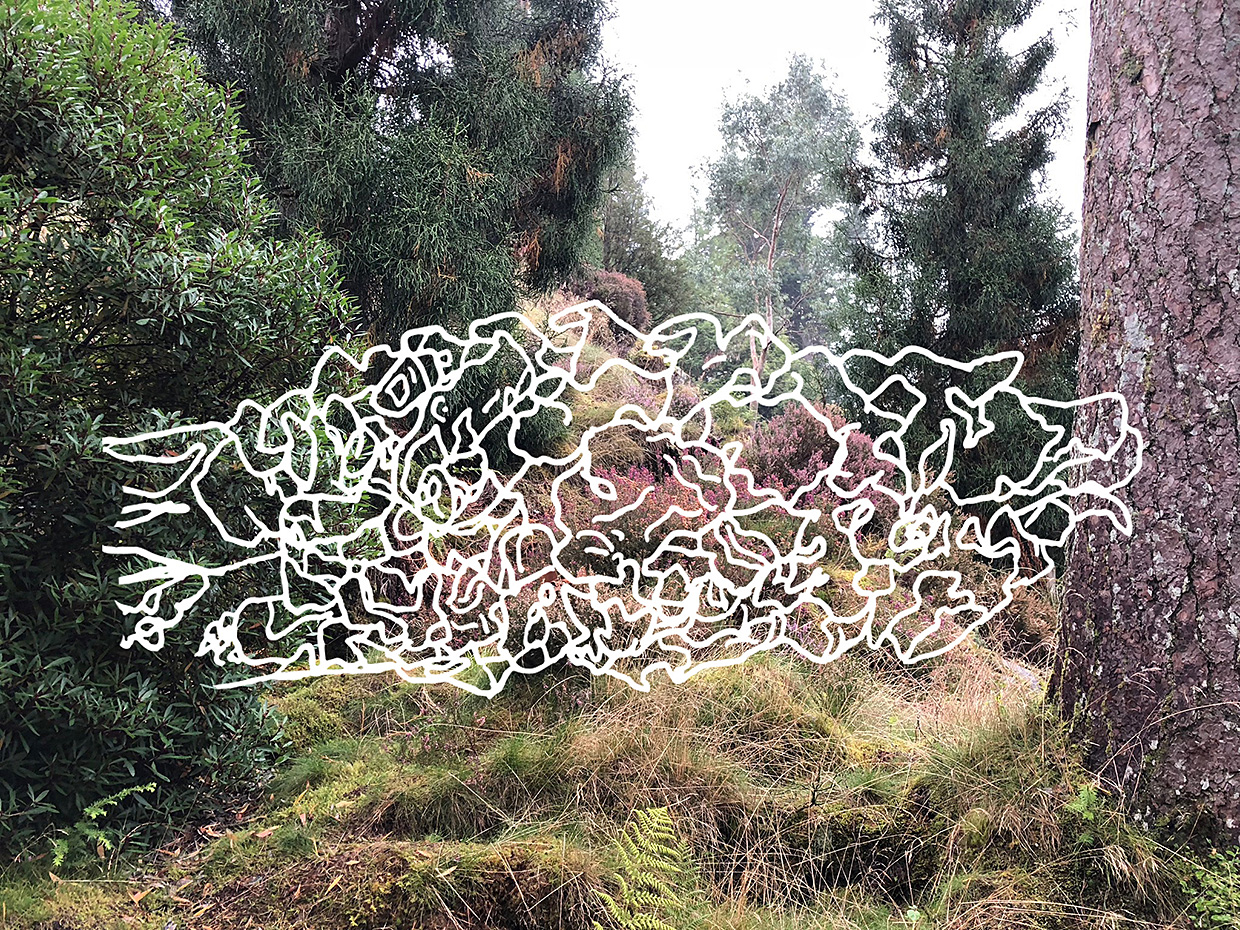
Drawing from the residency
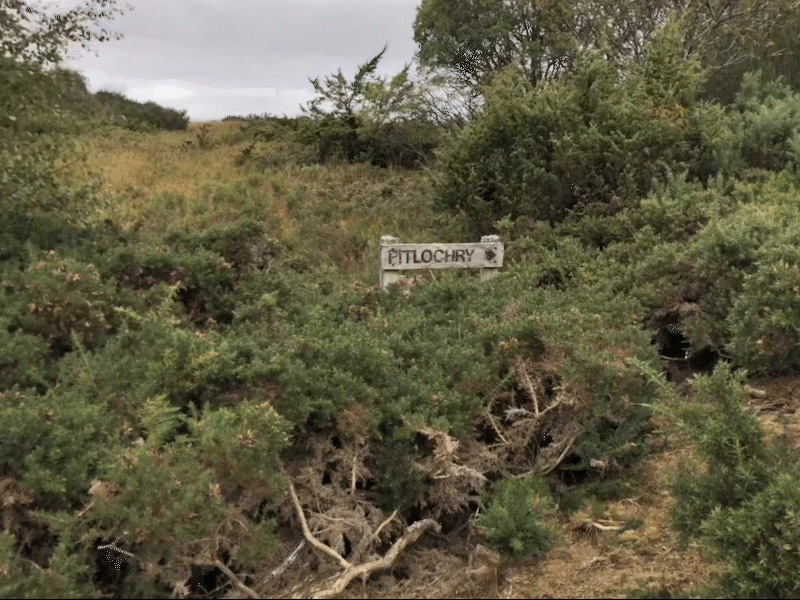
Pitlochry, the setting for the essay “Odor of the Past”
by Natsume Soseki

Aberfeldy, the burgh inspired Robert Burns to write
“The Birks of Aberfeldy”
Reason for Nomination
Focusing on insects, plants, and familiar environments, Aoyagi’s installation consists of videos, photographs, and actual insect and other specimens. While making use of a regular observational method akin to the research projects undertaken school children during their summer vacation, Aoyagi’s includes elements from her everyday life, creating a chaotic space imbued with a mixture of observer and observed, and the media used to record them. Scotland is home to expansive untouched natural landscapes, including spacious wetlands and luxuriant woods, and the country has retained countless legends of witches and fairies. After coming into contact with these natural areas and narratives, it will be interesting to see what kind of subjects Aoyagi discovers and what kind of spaces she creates, while incorporating aspects of them of her daily life, after returning to Japan. (Horiuchi Naoko)
Artist Statement
Tracing the Flow of Literature
This time for thinking about my work while surrounded by an environment, everyday life, and community distant from and different to those of Tokyo, Japan, where I was born and raised, proved also a time when my attitude toward creating art gradually changed. By passing time daily with artists from London or Scotland, I could discover in life the contexts of art and literature that the place that is Hospitalfield has. The unfamiliarity of the environment and language prompted me to consider anew the city where I live, nature within the city, and the words that we use.
Though the period of my residency was quite short―just one month―I set aside a large amount of time for conducting research prior to my visit or for doing further research on what I learned there once I had got back home. Thinking about the relationship between the “family friend” who appears in the calendar stories of Johann Peter Hebel and figures from Scottish folklore led me to develop my work through the frameworks of language and the land, oral tradition and conversation, and literature and moving image.
Monkbarns is the name of a place in The Antiquary, a novel by the famed writer of historical fiction Sir Walter Scott and inspired by Hospitalfield, which later became an artist residency facility. Reading one of the essays from Long Days, Small Pieces(also known as Spring Miscellany), which Natsume Soseki wrote in Pitlochry when he visited Scotland, I wrote the poem “Knockwinnock” in order to explore my own language for describing that place.
Takagawa Kazuya>
Japan
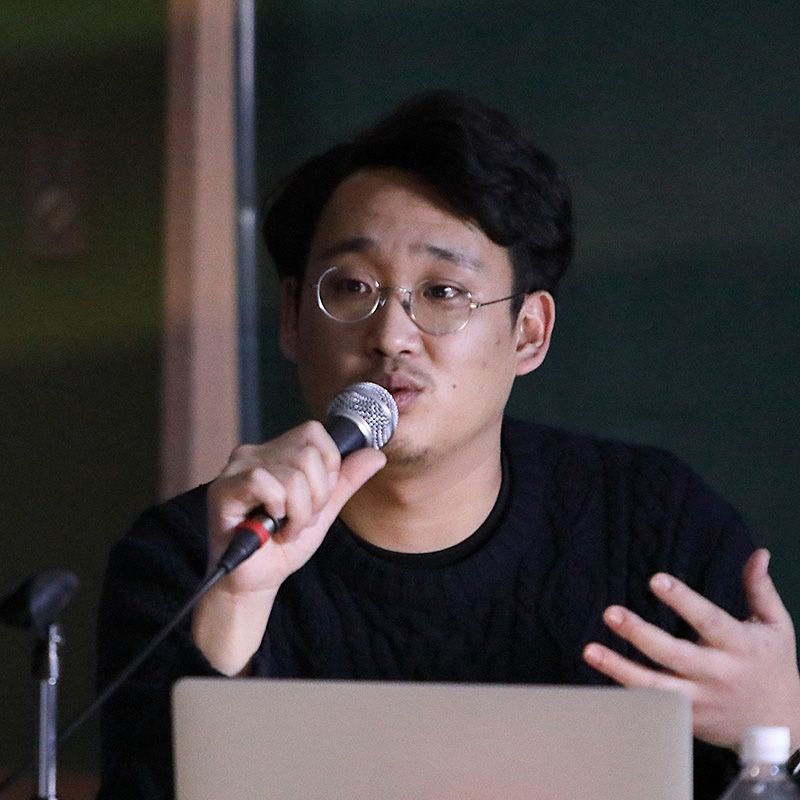
Born in Kumamoto in 1986. Lives and works in Tokyo. Takagawa obtained his Master of Fine Arts in Painting from Tokyo University of the Arts in 2012. Based the theme of “the self as a space that is confronted or unified by information,” in recent years, Takagawa has produced works using videos, drawings, and texts while referencing psychological and psychopathological methodologies. For Voicing the Extreme, a project he began in 2017, he studied collections of verbal utterances and their psychological effects.
[Selected Exhibitions and Activities]
2017 Socially Engaged Art: A New Wave of Art for Social Change, 3331 Arts Chiyoda, Tokyo
2017 Artist in Residence Kyoto: Re-Search, Kyoto
2016 ASK THE SELF, Tokyo Arts and Space Hongo, Tokyo
2015 3331 ART FAIR 2015, 3331 Arts Chiyoda, Tokyo

The meditation room at Findhorn Ecovillage (still image from research footage)
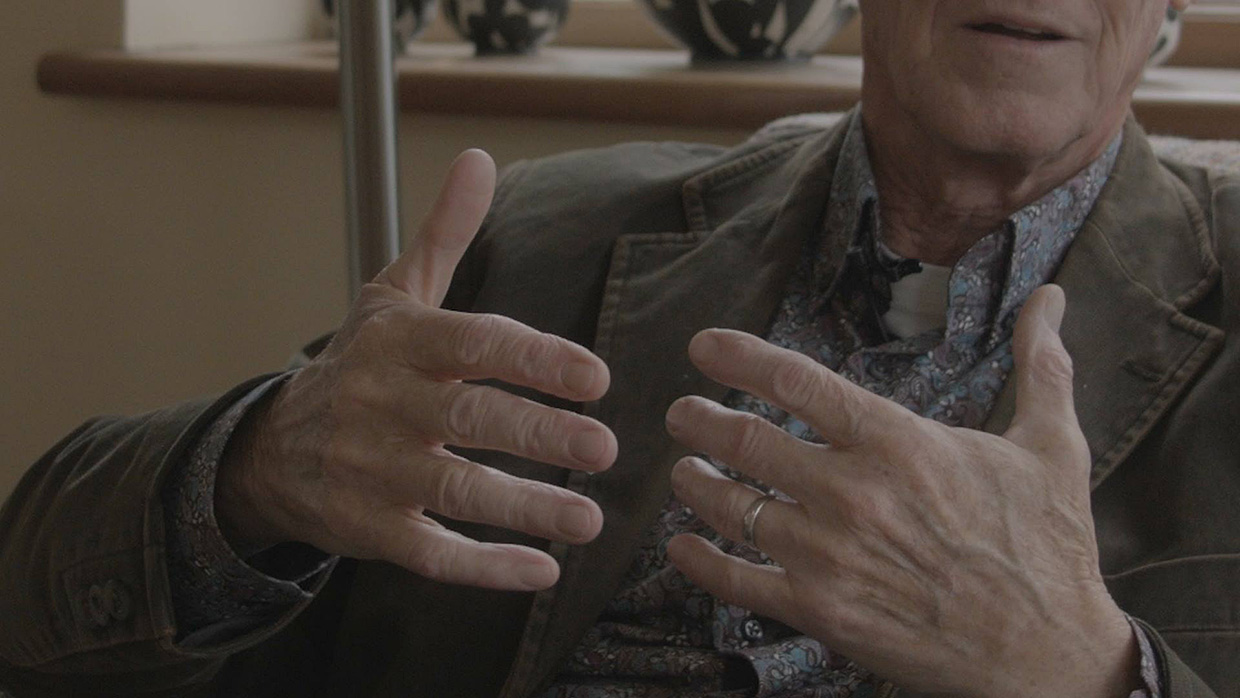
Interview with David, who has lived in the Findhorn Ecovillage
for nearly 40 years (still image from research footage)
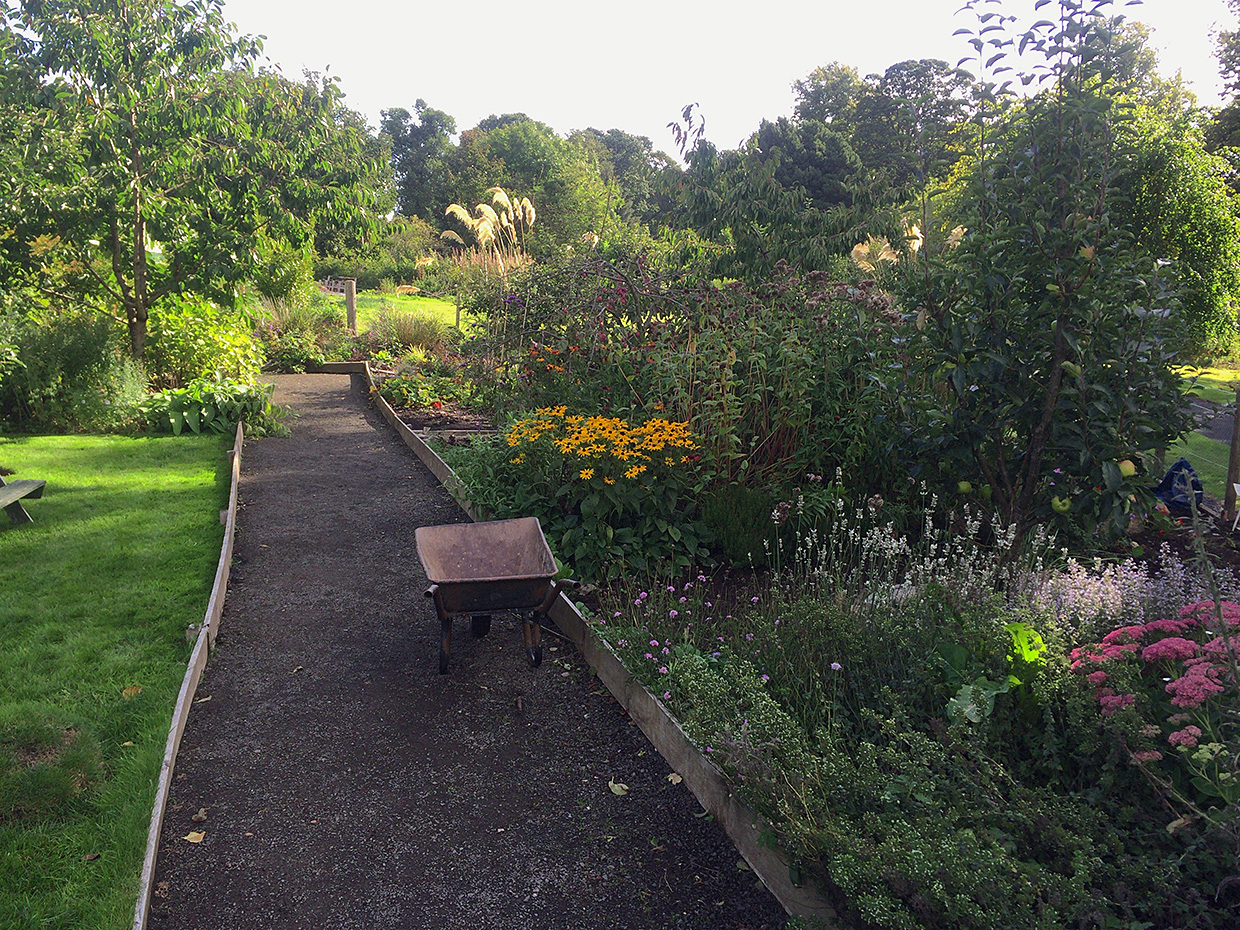
Participating in a volunteer program
at Ninewells Community Garden
Reason for Nomination
While referencing philosophy and psychiatry, Takagawa makes works that might be referred to as psychological experiments. By drawing slightly closer to the other and the elusive, ambiguous existence of the self, Takagawa’s work displays his efforts to hone his sensitivity toward the incomprehensible other. Using the theme of language as a means of enduring despair, Takagawa has in recent years assembled a collection of words from various eras, places, and experiences, including notes by those who experienced war, diaries by young people struggling with depression, and verbal expressions by rappers whose identities were molded by being a foreign resident of Japan. By continuing his research on the same theme, which he explored during his residency in Scotland, it will be interesting to see how Takagawa’s experiences affect his imaginative approach to the multilayered and highly complex other that dwells beyond the fragmentation of communication and the impossibility of translation. (Horiuchi Naoko)
Artist Statement
For my residency, I stayed at the village of Findhorn Ecovillage in northeast Scotland, where I conducted research on the people who live there and their lives. Founded as a self-sufficient community in 1962 by a group of mystics that included Eileen and Peter Caddy, the village today has more than 400 residents from all over the world. Living according to the three spiritual pillars of working toward a revolution in understanding and dedication on a global scale, living in harmony with nature, and recognizing the sacred that exists in each and every person and thing, the residents are entirely autonomous, from running a farm and canteen to even having their own currency. I was unable to contain my surprise at such a self-contained communal way of life.
I was particularly interested in the unusual form of dialogue and meditation that is done regularly at the village. (This is a style of dialogue known as “sharing” in which everyone joins hands in a circle and takes turns to say what they are feeling at that moment.) I have recently conducted research about expressing personal experiences through language―such as diaries, counseling, or poetry―and the motivations for doing so, and as such, I wanted to know more about that form of dialogue as well as its effects and the background behind its practice.
During my stay, I interviewed and filmed three people working or living at Findhorn Ecovillage, asking them about their experience of the village rules and of problems adjusting after relocating as well as about the dialogue and meditation. I hope to use this as research material for my future work.
Lesley Young
Scotland

Lesley Young is a curator of contemporary art based in Glasgow, Scotland. She is currently Programme Co-ordinator at Edinburgh Sculpture Workshop, where she devises the programme for artist residents, studio holders & members, and the public. She is a founding member of Chapter Thirteen, a curatorial co-operative established in Glasgow in 2017. In 2006 she established the curatorial agency The Salford Restoration Office with James N. Hutchinson to explore and critique the visual arts infrastructure of Manchester; within the project curating exhibitions of Artur Żmijewski, Jeremy Deller, and Dan Shipsides; as well as developing the reading group Reading Capital, the professional development project Centrifuge, supported by Imogen Stidworthy and Dirk Fleischmann for Manchester Metropolitan University and a public project with Katya Sander for The University of Manchester. Between 2014 and 2017 she lead the MLitt Curatorial Practice (Contemporary Art) course for The University of Glasgow. She has written about the work of Esra Ersen and Artur Żmijewski and has contributed writing to Towards a City Observatory, Collective Gallery, Edinburgh 2017.

Presentation of previous projects and events
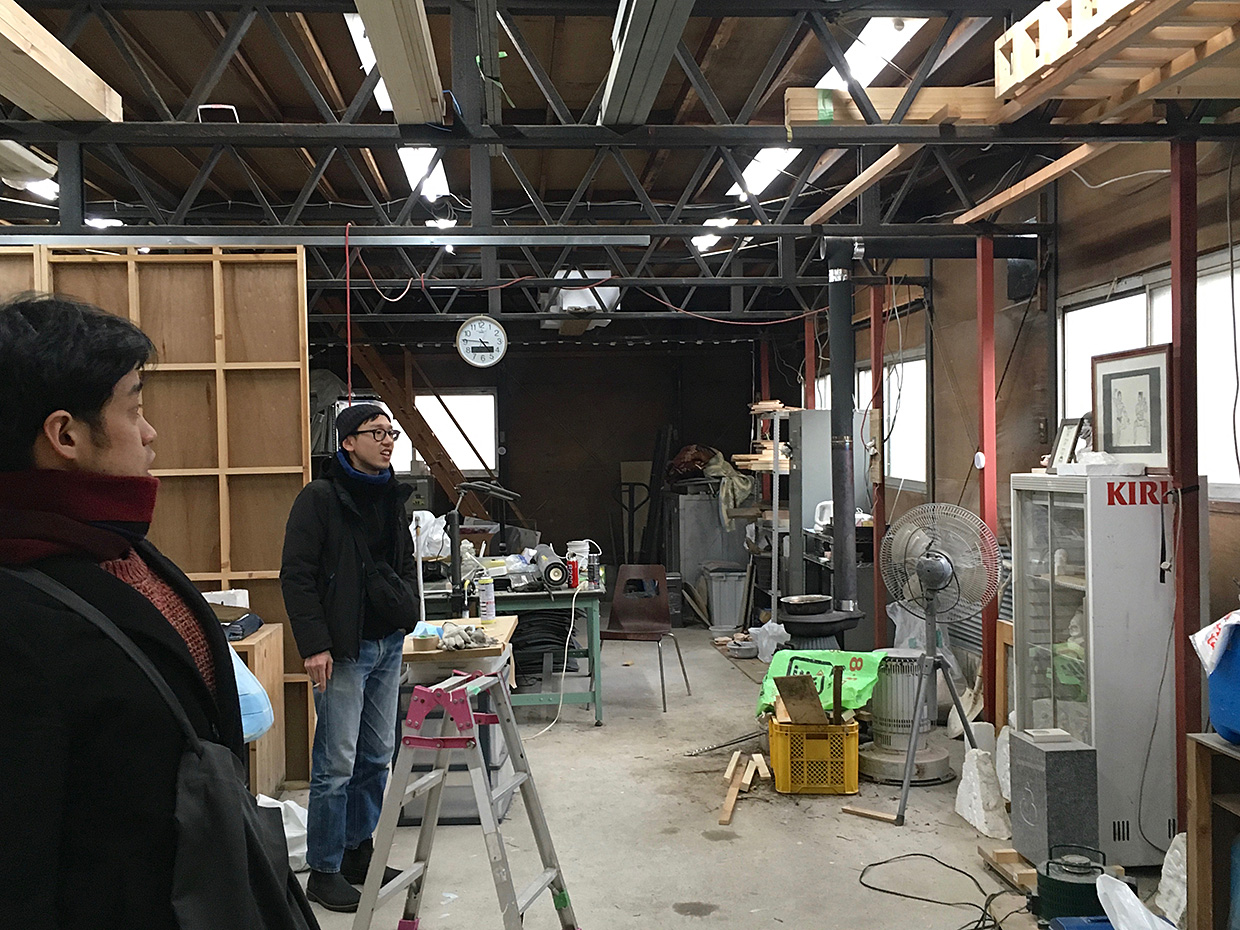
Studio visit to Yamanaka suplex

Meeting with an artist at the Contemporary
Art Gallery, Art Tower Mito
Curator Statement
When I arrived, Ibaraki was wintery, very much like Edinburgh, the city I’d just left. As the weather warmed, a schedule began to materialise as the ARCUS Team joined the dots between my curatorial practice and ARCUS’s wide and impressive network of artists, curators and educators. In two weeks it’s hard to do more than scratch the surface of any art scene but we tried at the very least to do this. The diary got more manic and crammed as my last days approached. The spacious days of occupying the ARCUS Studio and eating lunch with the team, led to a public talk, with a varied and engaged audience, then progressed into days travelling in Kyoto, Osaka and Naoshima―visiting galleries, meeting artists and simply experiencing the country. In turn those days then became crammed, hoovering up exhibitions and galleries, and running between appointments―there was mild panic and little sleep at the end as time ran out!
The residency opened the possibility to connect meaningfully with Japanese artists who tackle political, social and environmental issues through their work. It gave me the chance to get to know the ARCUS Team and benefit from their wide knowledge and kindness. I hope I will have the chance to work with some of the artists and ARCUS Team in the future, maybe offering them something in return from Scotland and the UK.
Residency Report
Reports from Residencies in Scotland and Japan: Paths Tracing Spirits and Memories
Date: February 23, 2019
Venue: ARCUS Studio
Speakers: Aoyagi Natsumi, Takagawa Kazuya, Lesley Young
Moderator: Horiuchi Naoko
The two Japanese artists, Aoyagi Natsumi and Takagawa Kazuya, and Scottish curator Lesley Young each gave a talk on their residency experiences. The event was an opportunity for them to share insights into the respective cultural landscapes of Japan and Scotland, the art scenes and the various social and historical topics they discovered from their different perspectives during their residencies.

